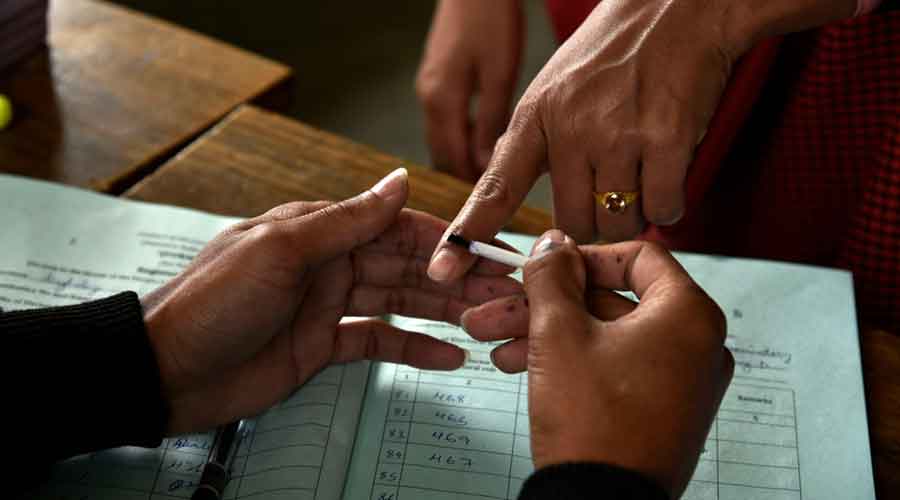The five-phase panchayat elections in Odisha commenced on Wednesday with leaders of the three major parties, including the ruling Biju Janata Dal (BJD), keeping their fingers crossed. The rural polls are being seen as a litmus test for all the top parties which will be facing the next general elections in two years’ time.
On Wednesday, voting for 200 zilla parishad zones, 1,669 panchayats and 22,379 wards was held. As per the state election commission, the voter turnout was around 70 per cent and polling was by and large peaceful. More than 2.79 crore people are set to exercise their franchise in the panchayat elections. The next four phases will be held on February 18, 20, 22 and 24.
Since results of the panchayat polls are seen as a strong indicator of public mood no party can afford to take the test lightly. Besides, they will set the mood for 2024 general elections. “Parties can take the rural polls lightly at their own risk. There is too much at stake for them,” said Sanjay Mohanty, head of the political science department at Maharshi College of Natural Law, Bhubaneswar.
While the BJD is banking on chief minister Naveen Patnaik’s image and his government’s pro-people schemes like health cards and cheap rice for the poor to win these elections, its main rival BJP is confident of Prime Minister Narendra Modi’s growing popularity doing the trick for the party. The BJP had done extremely well in the last panchayat elections and the party is confident of making deep inroads into BJD’s votebank.
However, since senior BJP leaders are busy with the Uttar Pradesh Assembly elections, the BJD hopes to take advantage of the situation.
“Most of the state level leaders of the party are unable to concentrate here because of their busy schedule in UP. Union minister Dharmendra Pradhan, who is BJP’s face in Odisha, has been made in charge of UP elections. His absence may prove costly for BJP in the panchayat elections.
The BJD, in any case, had a head start over its rivals with chief minister Naveen Patnaik doing a lot of groundwork much before the panchayat elections were announced. “He has visited different districts and launched a spree of projects in the last six months. The government also disbursed Rs 3,000 as house assistance and Rs 1,000 as livelihood assistance to the people during this period. This is enough to convince people in the state’s rural belt that Naveen cares for the poor,” said a political activist.
However, BJD’s internal feud in several districts can affect its prospects in some zilla parishads and panchayats. The problem persists despite efforts by top party leaders to sort out internal differences. “The elections at panchayat level and ward level are not fought on party symbols. Parties only provide tacit support to the candidates of their choice. At the village level, there are different groups and candidates sponsored by each group claim to be the ruling party’s candidate. That is the biggest problem,” admitted a senior BJD leader.











